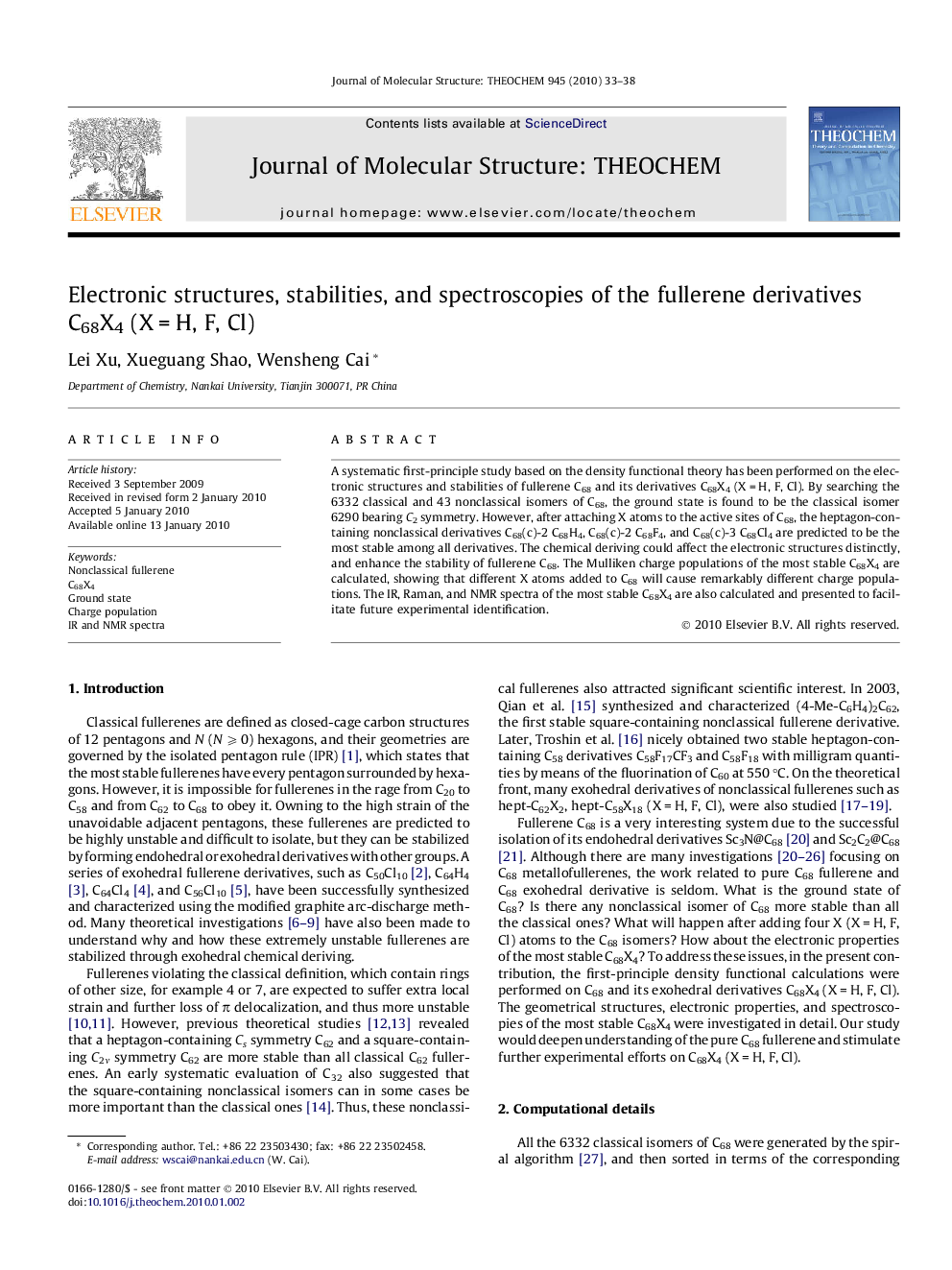| Article ID | Journal | Published Year | Pages | File Type |
|---|---|---|---|---|
| 5416900 | Journal of Molecular Structure: THEOCHEM | 2010 | 6 Pages |
Abstract
A systematic first-principle study based on the density functional theory has been performed on the electronic structures and stabilities of fullerene C68 and its derivatives C68X4 (XÂ =Â H, F, Cl). By searching the 6332 classical and 43 nonclassical isomers of C68, the ground state is found to be the classical isomer 6290 bearing C2 symmetry. However, after attaching X atoms to the active sites of C68, the heptagon-containing nonclassical derivatives C68(c)-2 C68H4, C68(c)-2 C68F4, and C68(c)-3 C68Cl4 are predicted to be the most stable among all derivatives. The chemical deriving could affect the electronic structures distinctly, and enhance the stability of fullerene C68. The Mulliken charge populations of the most stable C68X4 are calculated, showing that different X atoms added to C68 will cause remarkably different charge populations. The IR, Raman, and NMR spectra of the most stable C68X4 are also calculated and presented to facilitate future experimental identification.
Keywords
Related Topics
Physical Sciences and Engineering
Chemistry
Physical and Theoretical Chemistry
Authors
Lei Xu, Xueguang Shao, Wensheng Cai,
